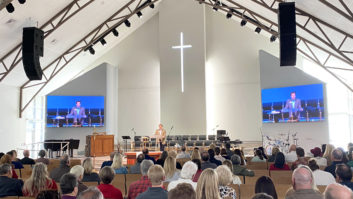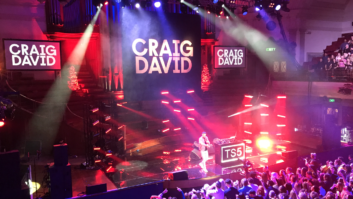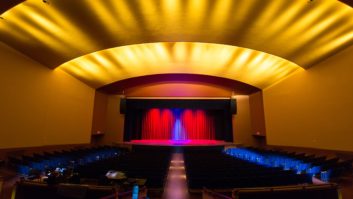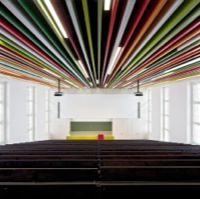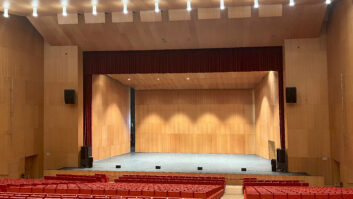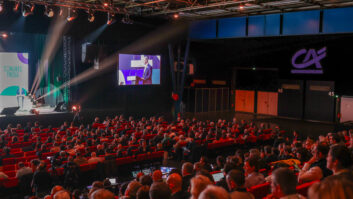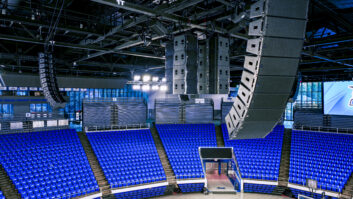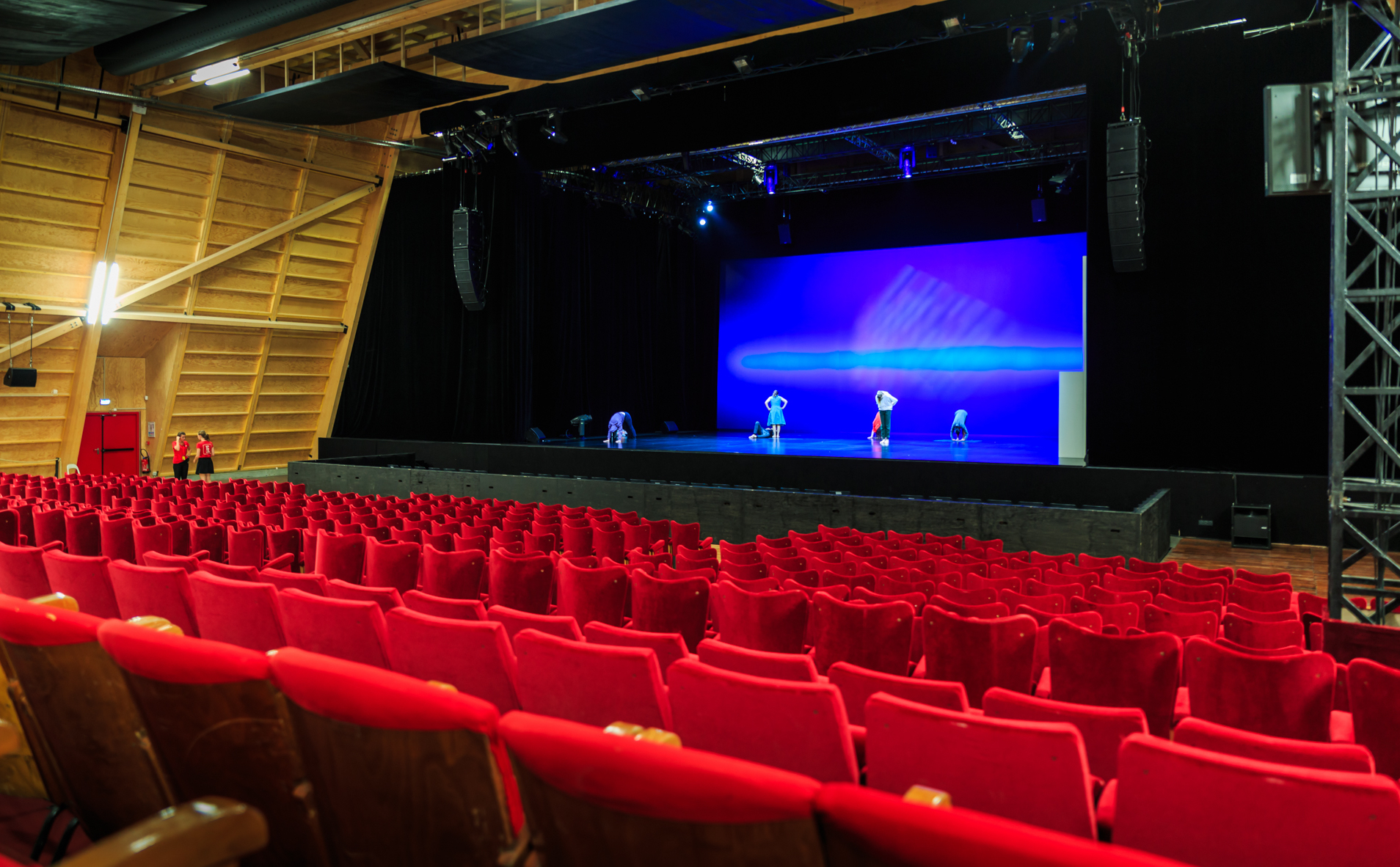
In the first part of this feature we revealed the uncertainty for concert venues created by diminishing budgets and rental increases before looking at the impact this is having on audio systems in these venues. Here we consider how manufacturers are able to satisfy the audio needs in these environments at a lower price point.
Other vendors interviewed for this piece echoed the need to remain conscious of price issues while also drawing attention to specific technical expectations. Hence Jim Newhouse, EAW’s North American director of sales, observes that “we always have to be [conscious] of budgets as they relate to ticket prices. Some venues will have much smaller budgets and that is why we filter down some of the amazing technology in our ADAPTive series [of sound reinforcement products] into more budget-conscious lines like Radius. Simplifying system configuration with things like IR sensors, Opti Logic and Dante [networking] we are making great sound available to venues with smaller budgets and limited full-time staff.”
Scalability is an important consideration here, with Newhouse highlighting the EAW ADAPTive series’ ability to “utilise fewer boxes and grow with the venues’ budget. Or we can look at one of our lower-cost line arrays – both self-powered and externally powered systems.”
Newhouse believes that the ADAPTive system approach chimes with venues who have increasingly specific sonic requirements of their permanent PAs. “When line arrays first came onto the scene venues liked the ability to produce more even vertical coverage,” he recalls. “We have taken that to the next level with ADAPTive, where we now have the benefits of the line array but we can create zonal EQs. We are no longer working box to box causing harmful interactions between boxes. We can tune and EQ a system as one large source and choose seating areas. Self-healing loudspeakers are also changing how we react to a driver incident during an event.”
Looking ahead, Newhouse echoes the sentiments of many observers when he highlights the burgeoning demand for “IP-based audio products. We are audio geeks like most in the industry, and new technologies are exciting. [Hence] we are constantly evaluating the needs and wants of the customer.”
Audience expectations
John Monitto, director of business development at Meyer Sound, starts by focusing on the expectations that audiences have as they come into smaller and medium sized venues. Their audio needs, he believes, “are driving a number of changes. For one thing, they expect audio systems to sound more transparent, and less like a typical PA system. Also, more venues are starting to make systems more immersive, using spatial sound platforms for a more exciting and involving experience. There are also greater expectations for sound localisation in plays and musicals. Other venues or music require high-impact systems, and the demand now is to deliver that sound with very low distortion and high dynamic range for music.”
For Meyer Sound this multitude of requirements translates to an ongoing policy of both introducing new products and updating existing ones. Monitto notes: “For power and transparency, we have the LEO Family of line arrays, which we recently expanded with the smallest member, LINA, and its companion 750-LFC low frequency control element. For immersive and spatial sound, [there is] the D-Mitri digital audio platform, which is a modular and expandable system that affords maximum flexibility in system configuration to allow for unlimited creativity in sound design. And D-Mitri is also at the heart of Constellation (the Meyer Sound acoustic system), with our patented VRAS processing algorithm.
“One good example of where this all comes together is at the new Cartuja Center in Seville, Spain, where a Constellation system can instantly tailor the acoustics for anything from drama to symphony orchestra, with a LEOPARD line array system to handle anything up to hard rock concerts.”
Monitto says that its customers “aren’t simply looking for the lowest cost per speaker box. They want a cost-effective, long-term solution, and that’s what we can offer. Our Constellation system is a good example. On the surface it may seem expensive, but for many multi-purpose halls it’s by far the lowest cost solution. It’s less expensive than variable physical acoustics – motorised panels, clouds, drapes and chamber doors – [and] with greater flexibility. It can mean building a hall with less interior volume, which saves on both construction and energy costs. It can even mean building only one hall rather than two.
“A good example of this is the new kING Culture and Congress Hall in Germany, where one facility can host a range of meetings and conferences in the daytime, and then in the evenings instantly become a first class concert hall.”
Uncertain times
Alas, the incorporation of sophisticated acoustic systems and suchlike will not be within the reach of all smaller venues, where more basic concerns of survival may have to dominate thinking as the live sector contemplates more uncertain times. One result of this unpredictable outlook is that cycles of investment are likely to become longer and venues will – reasonably enough – look to squeeze more life out of their consoles and PAs before looking to renew.
“I would say the cycle of renewal has slowed down a bit for smaller venues,” confirms the anonymous small venue manager. “Ideally we would look to replace our FOH console this year, and also review our on-stage monitors and some of the side-fills. But the reality is that rents have increased and we can’t afford it right now. However, 2019 is looking to be fairly busy, and it shouldn’t be too long before we can start investing in some new equipment.”
As this article demonstrates, there will be plenty of vendors waiting to satisfy their needs when funds allow – the choice of systems available to smaller venues being greater now than ever before.
